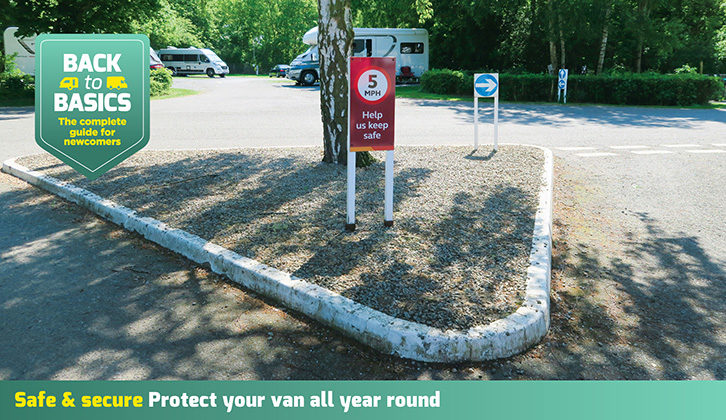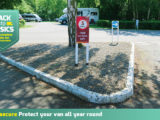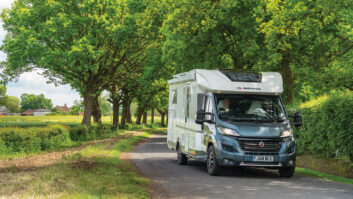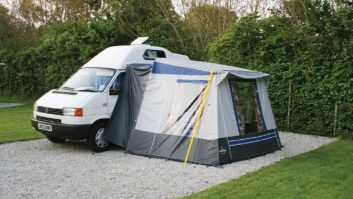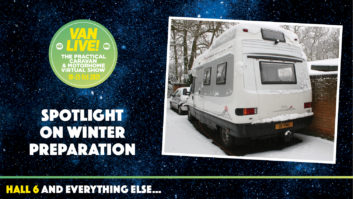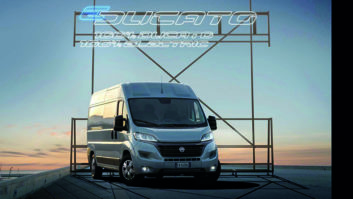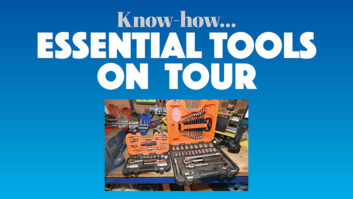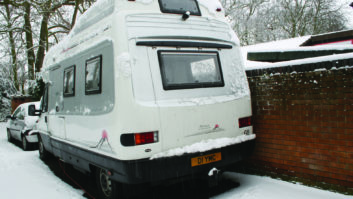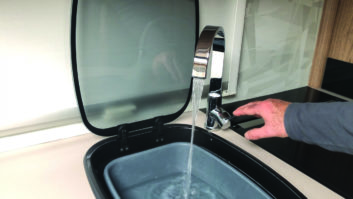Touring has to be the perfect way to enjoy the great outdoors, but occasionally things can go wrong. Back in 2013, we were new to camping and hadn’t thought about preparing for every eventuality.
Our sporty son (then seven years old) was playing football in bare feet, when his sister came in for the tackle and managed to dislocate his toe.
After I ran around like a headless chicken, not knowing what to do, my more composed husband stepped in and located the nearest hospital.
Luckily, they were seen quickly and were even back in time for the family barbecue. The moral to this story? When arriving on site, make sure that you know where to find important emergency contact information.
So, what do you need to be aware of? Here are some key points, but do bear in mind that every campsite is different – it’s a good idea to check with the warden if you’re unsure.
Information on hand
When you check in, the warden will usually issue you with an information leaflet, highlighting important ‘Safety on site’ tips, typically including local numbers for the police, A&E, walk-in centres, dentist and vets. This can also be found on noticeboards or in the Information Room.
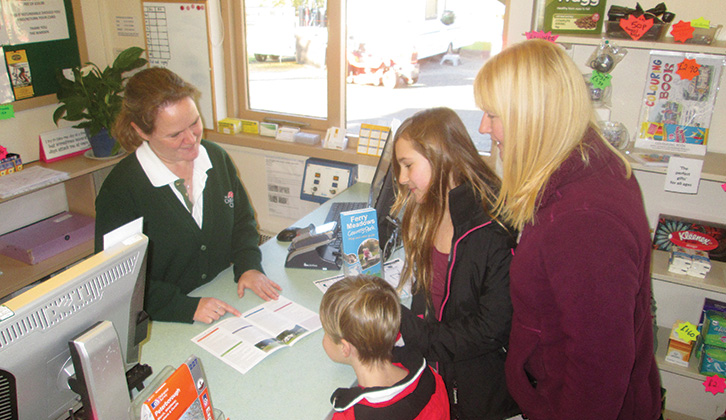
Rules of the road
Most sites have a speed limit of 5mph and adopt a one-way system, which applies to all road users, including bicycles and scooters.
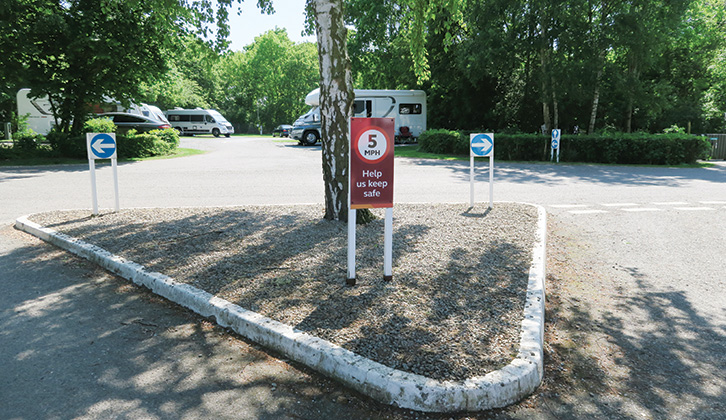
I can’t keep count of the number of times that I’ve seen bicycles racing around campsites with no respect for pedestrians! It is important that parents inform children of the rules
of the road. I always remind mine that, even if there’s a one-way system, they should keep eyes peeled and ears open.
In 2014, the Caravan and Motorhome Club ran a competition for members’ children to design a poster highlighting the 5mph speed limit and promoting the ‘Hi5’ Wave. The winning poster can now be seen displayed on signage at more than 200 Club sites.
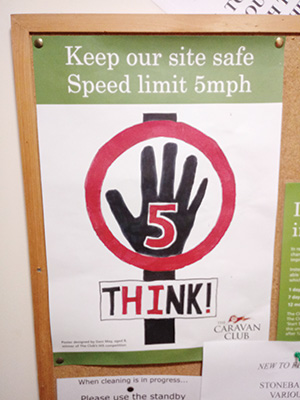
Pitching up
Reversing a motorhome can be a little daunting, especially if you don’t own a reversing camera.
It is great if you can get the help of an assistant to guide you. However, it is advisable for the assistant to ensure they can be seen in the driver’s mirrors at all times and to avoid standing directly behind the motorhome.
It is essential for you to leave a 6m gap between motorhome walls and at least 3m clear between equipment, such as the awning, and the next ’van. This is not just for privacy,
but more importantly, for fire safety.
If you take your motorhome or campervan to music festivals, you might be shocked by the intimacy of the pitching on certain sites. Don’t be afraid to insist on the 6m rule (we did!), but do check before booking that this can be accommodated.
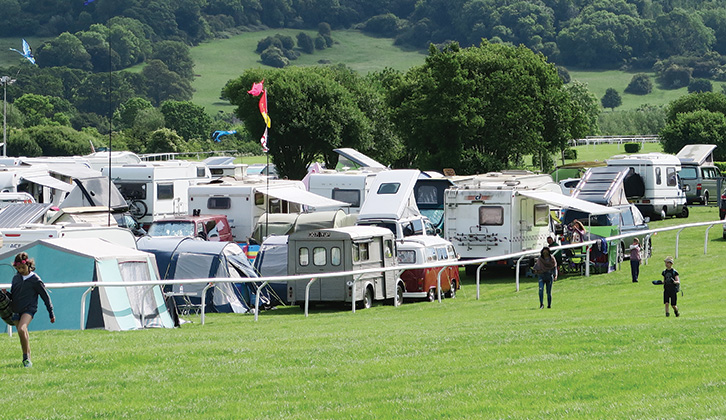
Pitches will come in various guises, including hedged, hardstanding, pegged and random pitches. It is best to check site pitching rules on arrival, thus avoiding the embarrassment of having to relocate once settled in.
Fire safety round-up
Your motorhome should have fire safety devices – alarms, extinguishers and fire blankets – and so should the site. On most permanent sites, you will find fire points, which allow you to raise the alarm in the event of a fire. There are various models of alarm to look out for, from a red triangle with a striker, to a bell.
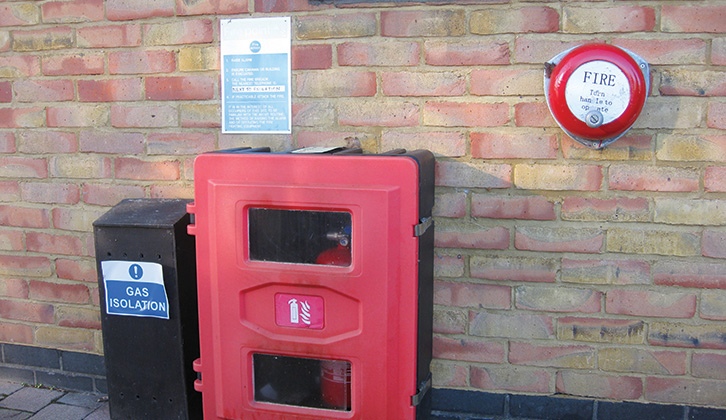
In the event of a large fire, there are often muster points or assembly areas. Check on arrival where these are.
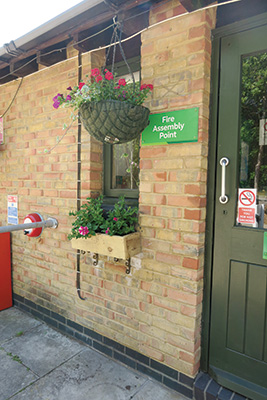
On arriving at a site, we challenge our children to a spot of orienteering and with map in hand, their task is to locate key items, such as fire safety equipment, and tell us all about them.
On temporary sites, it is advisable to have fire buckets next to your outfit, but do remember that you must not use water on electrical fires.
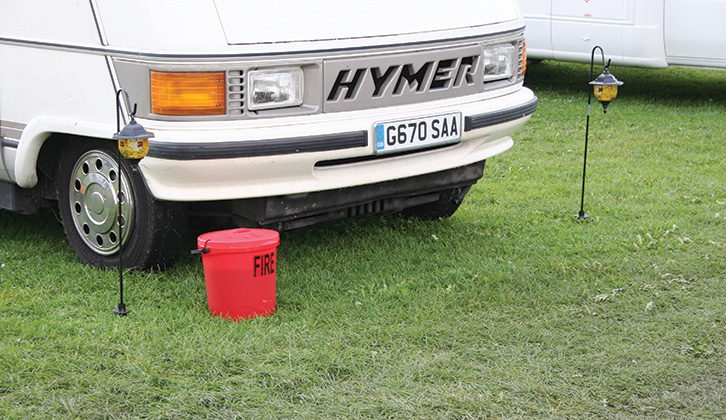
Carbon monoxide
Carbon monoxide is produced by fuel that burns or smoulders. Did you know a barbecue can give off CO for 12 hours after use? The advice is, keep your barbecues, gas heaters and other fossil fuel-burning appliances out of ’vans and awnings. Ensure you have a CO detector in your motorhome and service it regularly – at least once
a year. Be aware, too, that all CO detectors have a finite life.
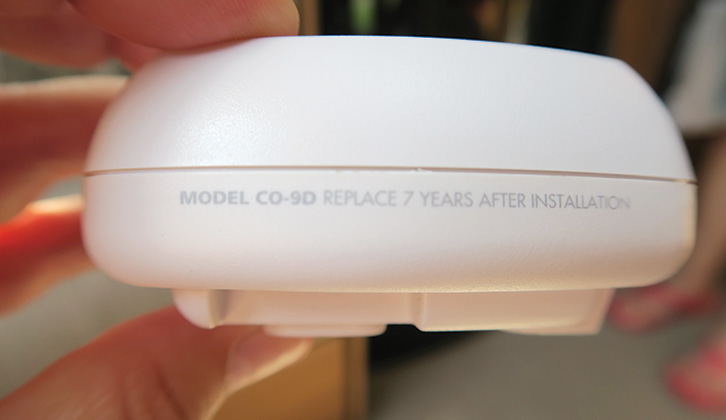
Hook-up cable
When connecting to the electricity, hook up to the motorhome first, then to the hook-up point. Always fully unwind the cable and lay it flat on the ground to avoid a trip hazard.
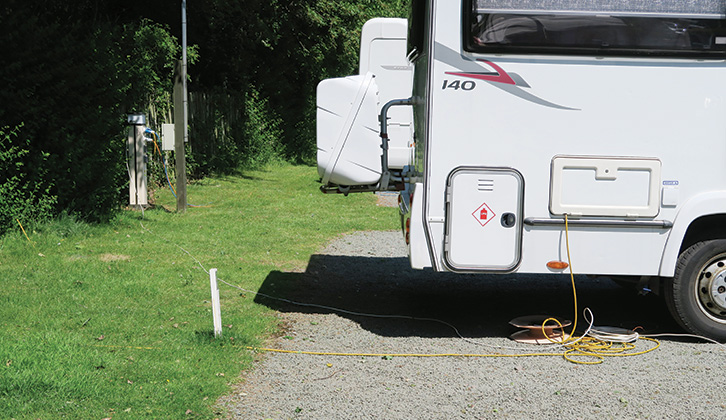
Coiled cables can overheat and catch fire. Any excess cable should be placed underneath the motorhome.
Children’s safety
Campsites can seem like one enormous adventure playground to children. But it is important that they are aware of site rules and know not to play near toilet blocks and service points, or on other people’s pitches.
Adults are responsible for their children at all times on site.
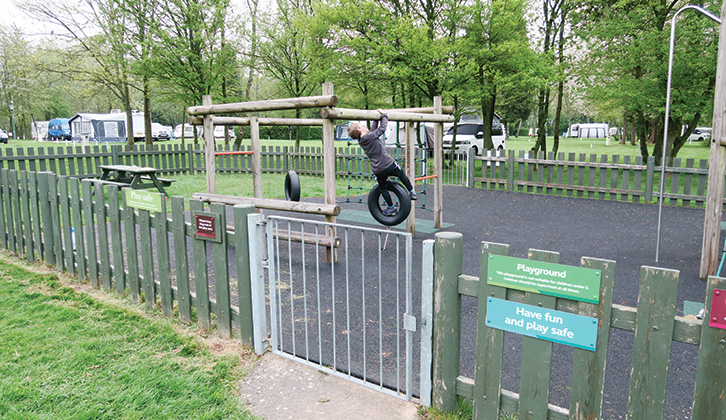
You can find out more great tips and advice for on site safety by heading to our Back to Basics: Safe and Secure category.
Future Publishing Limited, the publisher of practicalmotorhome.com, provides the information in this article in good faith and makes no representation as to its completeness or accuracy. Individuals carrying out the instructions do so at their own risk and must exercise their independent judgement in determining the appropriateness of the advice to their circumstances. Individuals should take appropriate safety precautions and be aware of the risk of electrocution when dealing with electrical products. To the fullest extent permitted by law, neither Future nor its employees or agents shall have any liability in connection with the use of this information. You should check that any van warranty will not be affected before proceeding with DIY projects.
Are you looking for an awning to take on tour with you? Then be sure to take a look at our best motorhome awning guide, where we share out top picks.
If you’ve enjoyed reading this article, why not get the latest news, reviews and features delivered direct to your door or inbox every month. Take advantage of our brilliant Practical Motorhome magazine SUBSCRIBERS’ OFFER and SIGN UP TO OUR NEWSLETTER for regular weekly updates on all things motorhome related.
